(Image credit: (Photo by Craig Ferguson/LightRocket via Getty Images))
The best road bike tyres will add some extra speed, grip and comfort to your summer riding. There are plenty of choices out there, with manufacturers putting a lot of R&D into their rubber compounds and tyre construction for the best road bike tyres in their ranges.
Speed can come at the expense of durability though, particularly once the weather starts to deteriorate as winter approaches, so you might want to swap to more robust winter tyres for the cooler months and keep your best road bike tyres for next summer. Paired up with the best road bike wheels, you'll appreciate the edge they give when the weather perks up again.
Wider tyres and rims have become more popular across the seasons. Where once 23mm rubber was the uniform issue 'choice', now 25mm is the norm, with many bikes coming with 28mm + to better maximise the added cornering grip and comfort on offer from this once scandalous choice.
Paired with the right rim, wider tyres can be more aerodynamic, too. However, it is important to check that your frame has the clearance for a wider tyre on your usual rim width if you have a frame with tighter clearances.
Here's our selection of the best road bike tyres that we've tested here at Cycling Weekly. Head to the bottom of the page for our buyer's guide to road bike tyres.
We've rounded up a the best road bike tyres that we'd recommend riding in the warmer seasons.
(Image credit: Future)
Fastest tubeless road bike tyre
TPI: 320/160
Weight: 290g (25c)
Widths: 25c, 28c
+
Low rolling resistance
+
More durable than predecessor
+
Tubeless setup
-
Speed sacrifices durability
Today's Best Deals
The Vittoria Corsa is often considered a go-to race tyre and has been the choice of more pro teams than it's possible to list, but often with the gamble of speed over durability.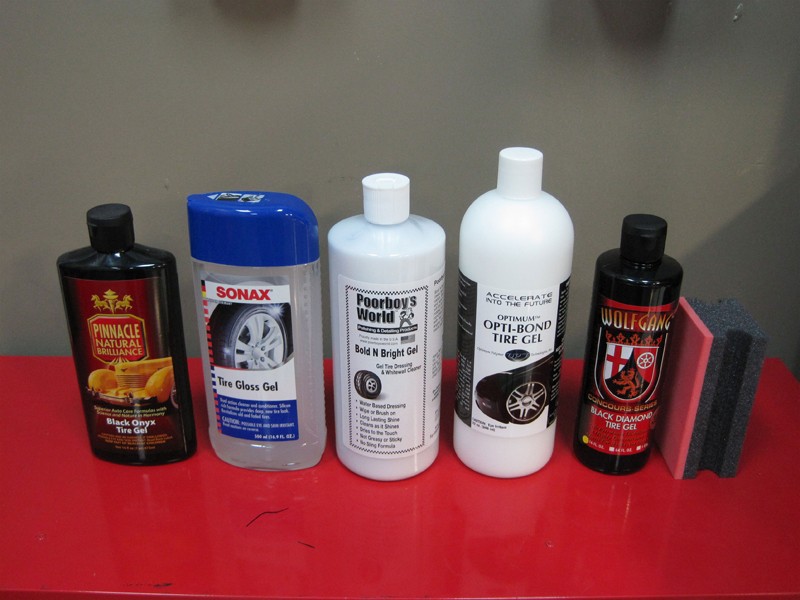 Not as much of an issue if you're pro and have a team car loaded with spare wheels, more so if you're stripped of your local Crit win due to a sudden deflation.
Not as much of an issue if you're pro and have a team car loaded with spare wheels, more so if you're stripped of your local Crit win due to a sudden deflation.
The Vittoria Corsa G2.0 TLR features a new improved graphene compound, which helps keep the Corsa's known fast rolling properties, but now with added protection.
While this is no match for the likes of the Continental GP5000, it does make a marked difference in the lifespan of a pair, making these a winning tyre, so much so that we selected them for a Cycling Weekly Editor's Choice Award.
The tubeless option weighs 70g more per tyre than the non-tubeless version, however total system weight will be comparable, as inner tubes are dispensed with.
Read more: Vittoria Corsa G2.0 TLR tyre review
(Image credit: Wiggle)
Best road bike tyre for grip
TPI: 127
Weight: 195g - 230g (claimed)
Widths: 23-28c
+
Grippy on the road
+
Puncture resistant
+
Feel fast
-
Not as supple as others
Today's Best Deals
Another receiver of our Cycling Weekly Editor's Choice Award and rightly so. On test we highly rated the PZero Velo tyres for their ability to balance speed, grip and resist punctures, even in wet conditions.
On test we highly rated the PZero Velo tyres for their ability to balance speed, grip and resist punctures, even in wet conditions.
Launched at the same time as the Pirelli PZero Velo TT and Pirelli PZero Velo 4S, the PZero Velo marked a much welcome return to the cycling world after a long hiatus.
Fast rolling and having only suffered one puncture in three months of testing, we even threw a pair into a wet crit race, and felt incredibly grateful for the choice of the grip-happy tyres when cornering in the wet at full throttle.
There are slightly more compliant options on the market like the Vittoria Corsa if you're after a silky smooth ride, but if you're looking for a confidence-inspiring, great road bike tyre in changeable weather conditions you can't go wrong.
Read more: Pirelli P Zero Velo tyre review
(Image credit: Wiggle)
Lightest popular racing clincher
TPI: 127
Weight: 205g (26mm)
Widths: 26mm, 28mm, 30mm
+
Lightweight
+
Grippy
+
Fast rolling
+
Good puncture resistance
-
Rivals with cotton casing feel suppler
Today's Best Deals
Pirelli's new fastest clincher is easy to set up on tubeless-ready rims, it is lightweight at 205g for the 26mm size, supplies good traction and is surprisingly resistant to cuts.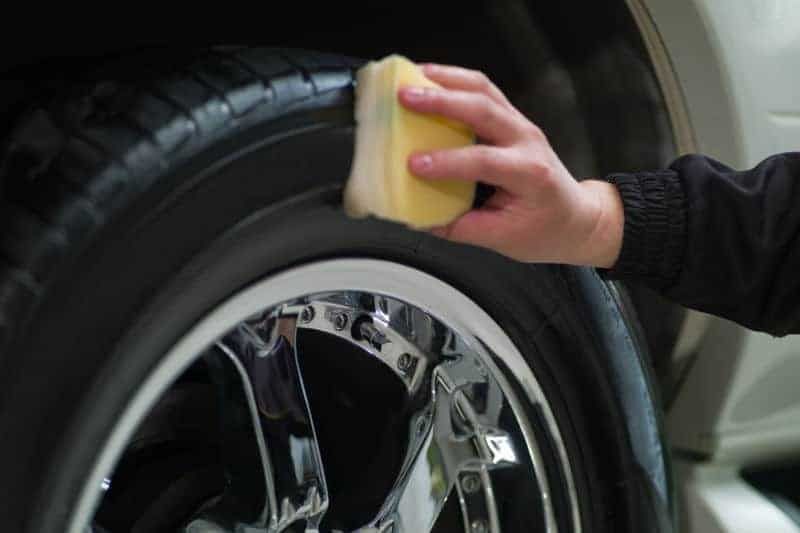 At its RRP it undercuts its counterparts from Continental and Vittoria, giving it a very good performance to price ratio.
At its RRP it undercuts its counterparts from Continental and Vittoria, giving it a very good performance to price ratio.
According to Pirelli, after three years of development work with racers at the WorldTour level, including the male and female 2019 world champions, it designed the P Zero with its new SmartEVO compound and TechBelt casing technology.
We were impressed with the grip as well as the resistance to cuts. We did a decent number of miles on them and were also very impressed with their robustness for such a lightweight tyre.
With the emerging trend for choosing clinchers and tubes over tubeless for faster road riding at higher pressures, the Pirelli P Zero Race would be an excellent choice. These are tyres fit for the WorldTour, they’re priced slightly lower than their competitors - as a fast, lightweight and grippy race tyre they have everything covered.
Read more: Pirelli P Zero Race tyre review
Schwalbe Pro One
(Image credit: Wiggle)
Best tubeless road bike tyre for multiple wheel sizes
TPI: 360
Weight: 264g (25c)
Widths: 23c -28c
+
Lightweight option
+
Fast rolling
+
Grippy on the road
+
Multiple sizes (inc 650b)
-
Come up wide, check your clearance
Today's Best Deals
Now in its second generation, according to Schwalbe, the Pro One tyre is the fastest on the market. It's quite some boast, and while we don't have the laboratory testing facilities to verify the claim, we can vouch that they are indeed exceedingly rapid.
It's quite some boast, and while we don't have the laboratory testing facilities to verify the claim, we can vouch that they are indeed exceedingly rapid.
Gip is reassuring, even when coming in far too hot on sketchy roads when out testing and meeting a sudden roadblock, locking up the back wheel, it still felt a fully controlled skid and easily rectified.
The only challenge is getting the right size for your tyre vs wheel vs bike combo. On test our 700c 25mm tyres, inflated to 70psi on a set of Mavic wheels with 19mm internal rim, measured 29mm. One to be aware of especially if you're riding something with close clearances.
The best bit is the range of wheel sizes catered for. This pair of rapid rubber starts at 20" and includes 650b as well as a more regular 700c, although the widths are limited in the smaller diameter sizes.
They're far from the cheapest tyre on the market, but there are also a handful of different cycling disciplines catered for - so a great road cycling tyre for meeting specific needs.
Read more: Schwalbe Pro One tyre review
(Image credit: Future)
Cycling's gold standard in clincher form
TPI: 330
Weight: 200g - 290g
Widths: 23c - 32c
+
Puncture resistant
+
Fast
+
Grippy
-
Tough to go on some rims
-
Pricey
-
We recommend clincher over tubeless version
Today's Best Deals
We absolutely love the GP 5000, and, if we were to ride only one pair of tyres year round, it would be these, content with sitting in either best summer or best winter tyres for road cycling buying guides. The Grand Prix 5000 replaces the popular Continental GP 4000 (or GP 4000 S II) and it's an all-weather, all-condition Jack of all trades tyre.
As with the GP4000, the GP5000 has also gained Cycling Weekly Editor's Choice Award status, making these a go-to pair for many of our testers.
It may not be as fastest tyre on paper, but the effective Vectran Breaker layer keeps punctures at bay whilst the famous BlackChili Compound and new 'LazerGrip' help keep you planted, which encourages rider confidence and ultimately rider speed. The latest iteration includes an extra layer for comfort, and claims to be 12 per cent faster and 20 per cent tougher than the outgoing model.
It's also available in a tubeless option, but we personally felt that the clinchers provided a more supple ride making these the best road bike tyre for all round use.
Read more: Continental GP 5000 tyre review
(Image credit: Wiggle)
Best road bike tyre to rival Vittoria Corsa
TPI: 320
Weight: 220g - 260g
Widths: 24c - 28c
+
Fast feeling
+
Available in three widths
+
Look great
-
Tan sidewalls get dirty
-
Not the most puncture proof
Today's Best Deals
One of the grippiest and fastest feeling tyres that we've tested, the Turbo Cotton tyres really put meaning into 'confidence inspiring'.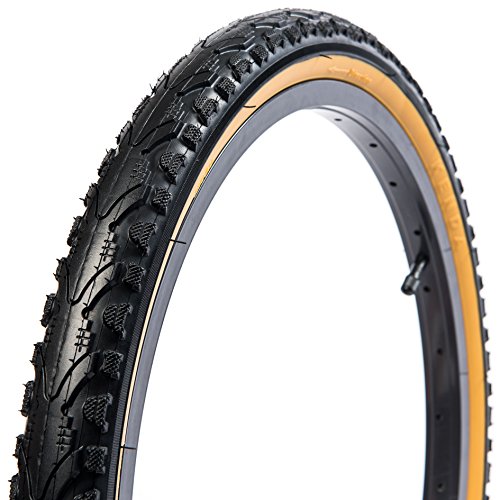
The Turbo Cottons are now available in 24, 26 and 28mm widths and each tyre uses 320 TPI polycotton which makes them very supple and they also use a Gripton compound. In testing we found that the tyres rolled extremely well and that they felt super fast.
We like them so much that we awarded them a spot on our Editor's Choice Award list. They come in three different sizes (24, 26 and 28mm) so there's something for everyone.
While these are more durable than the Vittoria Corsa tyres, they are best for sunny days, when road detritus is minimal (and you're not getting the sidewall mucky), and expect only a season on the road on them, so not the most economical, but the most fun.
Read more: Specialized Turbo Cotton tyre review
(Image credit: Future)
Best for race-ready grip
TPI: 120
Weight: 210g (25mm)
Widths: 23c, 25c, 28c
+
Supple
+
Grippy
+
Easy to fit
-
Expensive
Today's Best Deals
We rated the Maxxis High Road tyres for their supply, grippy ride and race-ready weight. They coped well with rougher roads too and we didn't puncture and had no cuts or damage whatever we threw at them, with Maxxis including a Kevlar anti-puncture layer in the tyre's carcase.
They coped well with rougher roads too and we didn't puncture and had no cuts or damage whatever we threw at them, with Maxxis including a Kevlar anti-puncture layer in the tyre's carcase.
Maxxis claims to be the largest maker of bike tyres in the world and the High Road tyres are among their prime performance road bike tyres, designed to compete with the likes of the Schwalbe Pro One and the Vittoria Corsa and ridden at WorldTour level by the Israel-Premier Tech pro team.
The Maxxis High Road tyres are pricey, although not out of line with other high end tyres like the Continental GP5000, so we reckon they're well worthwhile adding to your replacement tyre shortlist.
Read more: Maxxis High Road tyre review
(Image credit: Wiggle)
Best road bike tyre for harsh road conditions.
TPI: 220
Weight: 291g (27c)
Widths: 25c - 27c
+
Supple ride feel
+
Handmade using natural fibres
+
Resilient to punctures
+
Not more expensive than the competition
Today's Best Deals
When compared to peers like the Continental GP5000 and Schwalbe Pro One tyres, the standout feature of the Challenge Elite XP is their construction.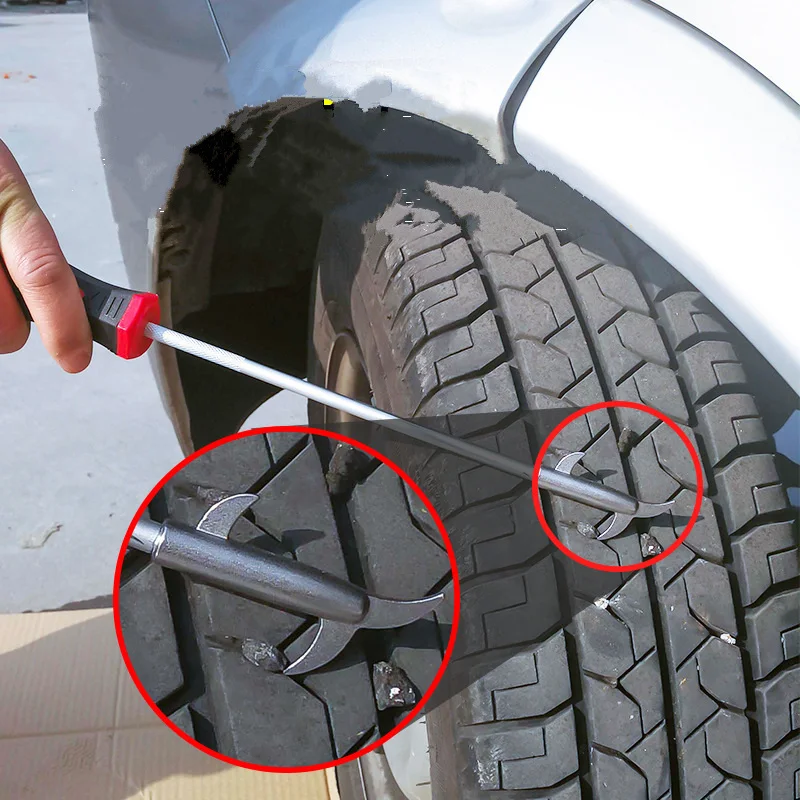 The handmade tyres use more natural fibres than average, so are more supple and have a lower rolling resistance.
The handmade tyres use more natural fibres than average, so are more supple and have a lower rolling resistance.
Slightly tricky to fit, once on they didn't disappoint and on test we found these to be comfortable and very supple, with solid grip in corners, even in the wet.
Riding them in all conditions has meant a good test of their puncture protection which seems to be pretty robust.
The clincher only tyre is the closest you'll get to crossing over into winter riding territory, and it would certainly be a good option for year round riding.
The Challenge Elite are great road bike tyres, we'd put them level with the highly rated Continental GP5000 performance-wise but they can often be found slightly cheaper.
Read more: Challenge Elite XP tyre review
(Image credit: Wiggle)
Best road bike tyre for tubeless conversion
TPI: 360
Weight: 300g (28c)
Widths : 25c - 28c
+
Easy to fit tubeless
+
Fast
+
Lightweight
+
Maintain pressure
+
Durable
Today's Best Deals
We sang the praises of these game changing tyres. For many riders who are put off by the idea of going tubeless and lack the confidence or paraphernalia, the Goodyear Eagle F1 Tubeless Complete are by far the best road bike tyre to start off with.
For many riders who are put off by the idea of going tubeless and lack the confidence or paraphernalia, the Goodyear Eagle F1 Tubeless Complete are by far the best road bike tyre to start off with.
Considered America's top motorsport performance tyre the Eagle range has crossed over into the cycling world exceptionally well, ticking every ideal road bike tyre must-have list of suppleness, comfort, speed and durability.
But the big selling point is that, other than a cup of sealant, there's no technical equipment required. The tyres are more than happy to be inflated with a standard road pump, making the tubeless set up much more accessible to many riders than with harder to seat tyres like the Continental GP5000 TL. Weight-wise they're comparable to the Vittoria Corsa G2.0 TLR and the Schwalbe Pro One.
There are a few options available in terms of sidewall colour and tyre width. There's also a cheaper Sport option, where the brand promises much of the same good stuff, bar the tubeless capability.
Read more: Goodyear Eagle F1 Tubeless Complete tyre review
(Image credit: Wiggle)
Best road bike tyre on a budget
TPI: 360
Weight: 300g (25c - 28c)
Widths : 23-25c, 25-28c, 30-32c
+
Value for money
+
Rolling resistance
+
Size options
+
Puncture resistance
+
Grip on the road
-
Overall tyre weight
Today's Best Deals
Balancing ride quality with puncture protection and weatherproofing is an art, and we feel Specialized has cracked it with the Roubaix Pro.
The 120 TPI count sets it out as an endurance option, and the compound used is the brand's own in-house 'Gripton'.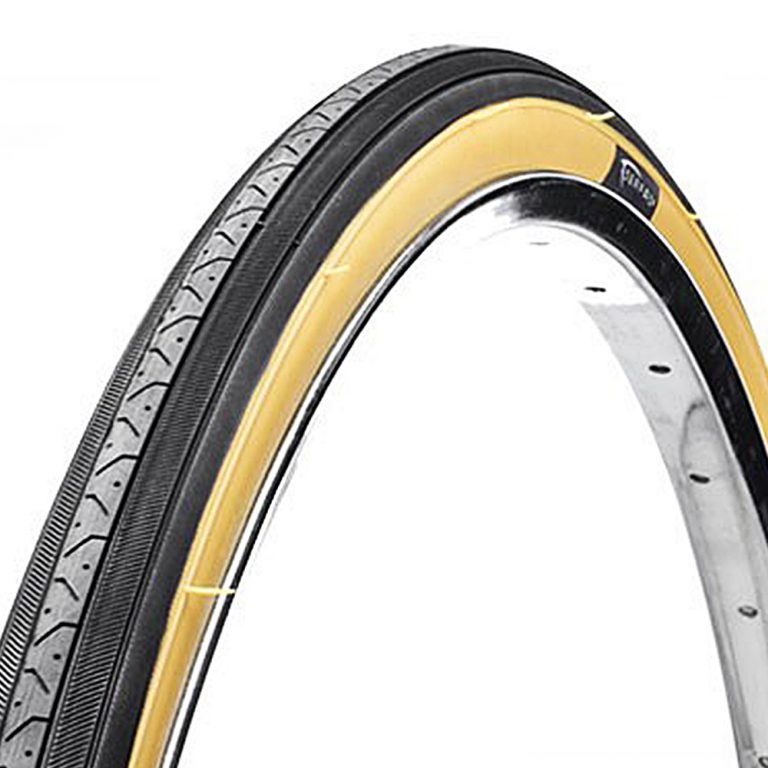
The bead-to-bead Endurant Casing provides puncture protection which is lighter than the Kevlar and Nylon used elsewhere, like in the Maxxis High Road tyres, and this is paired with BlackBelt technology (a strip of woven material running under the tread).
We mounted these on a pair of the high end Zipp 454 NSW carbon clincher wheels and although theoretically at opposite ends of the spectrum, they actually collaborated exceptionally well. Any speed limitations of the tyres were negated by the wheels, and the added confidence of the road grip kept the average speed up high.
If you're looking for a fast solo ride with limited support on less than perfect road conditions, then the Specialized Roubaix Pro is one of the best road bike tyres to pair with special wheels for confidence that you're not gambling speed over an untimely flat, making these ideal for less risk averse riders.
Read more: Specialized Roubaix Pro tyre review
There are three types of bike tyre on the market - clinchers, tubulars and tubeless - and they each have their pros and cons.
First up is the clincher, the choice of the majority of road riders. This features a bead around the outside of the tyre which hooks under a lip on the rim, with a separate inner tube running inside.
The main advantage of this system is convenience, with the inner tube being easy to change in the event of a puncture. There are a vast number on the market, so we rounded up the best bike inner tubes to help you find the best fit for your clincher.
Next is the tubular tyre. With this design, the inner tube is sewn into the tyre, with the whole thing then attached to the wheel using glue or adhesive rim tape. This is the choice of a lot of racers due to the generally lower rolling resistance and weight, particularly of the wheel rim since this doesn't need a lip, but is a faff to set up, expensive and can be impractical when you puncture.
Finally, you’ve got tubeless tyres. These are similar to clinchers, but with the tyre sitting firmly enough against the rim to hold the tyre’s pressure, eliminating the need for an inner tube altogether. The tyre is then filled with sealant, which plugs cuts or gashes in the rubber.
The tyre is then filled with sealant, which plugs cuts or gashes in the rubber.
Our tubeless sealant buyer's guide explains all you need to know when choosing the right product for your tubeless tyres.
This system has very low rolling resistance and greatly reduces the chance of punctures, although the snug fit that is required between the tyre and the rim can make tubeless tyres difficult to fit and it can be awkward to get the tyre to seat properly.
The puncture protection offered by tubeless tyres is very impressive. To see how impressive watch the video below where we hammer nails into a tyre!
Video can a tubeless tyre survive a nail?
The three main categories to look out for in a tyre are puncture proofing, the tyre's rolling ability and grip levels. Whilst in an ideal world we’d have all three, in reality, we have to limit one to increase another.
In order to boost puncture protection, manufacturers will usually add an extra layer - a Kevlar or Vectran breaker in most cases - to catch foreign objects before they reach the tube. The tougher these layers are, the heavier and more sturdy they'll make the overall rubber - making them slower or less supple, so reducing grip.
The tougher these layers are, the heavier and more sturdy they'll make the overall rubber - making them slower or less supple, so reducing grip.
Ultimately, you need to decide what's more important to you. Riders commuting on less than perfect road surfaces - especially during the winter - will favour puncture protection. If this is you then you'll probably want to choose from one of the best winter tyres for road cycling instead.
A rider racing on a closed circuit may be more concerned with rolling resistance and grip.
If you are after maximum protection from flatting on a ride, then head over to our page dedicated to the best puncture-proof tyres for cycling.
We have a couple of things to consider before we go in-depth. A standard road wheel size is 700c with the most common tyre options being 23, 25 or 28mm widths.
Traditionally, 23mm widths were put on race bikes, 25mm for training and 28mm widths for a mixture of hard and rough roads.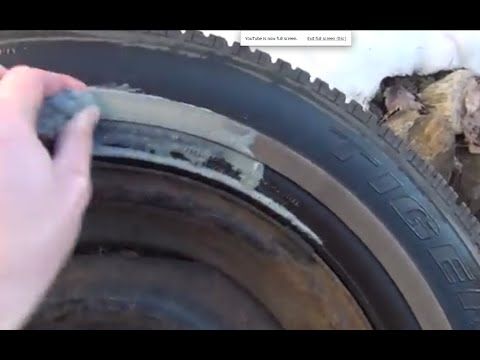
With modern technology allowing for better tyre construction, we’ve seen a definite shift in how different width tyres are used. For example, most road riders now like to use 25mm tyres as they handle better in the corners, can lower rolling resistance by dampening out uneven surfaces and can be run at lower pressures than 23mm tyres.
Wider tyres can deliver better comfort, puncture protection and grip, mainly at the cost of weight. They're better for wet winter roads too.
With modern disc brake road bikes generally offering greater tyre clearance, 30 and 32mm tyres are becoming more commonplace, especially on endurance or audax bikes.
Summer brings good weather, clean roads and the best road bikes out to play, so it seems ludicrous that we would stick a slow-rolling and heavy-duty tyre on our bikes.
If a fast rolling tyre is your thing, you’ll be expected to have lowered protection from punctures with a thinner puncture protection belt to help reduce weight and rolling resistance, which will help that fast feeling we all desire.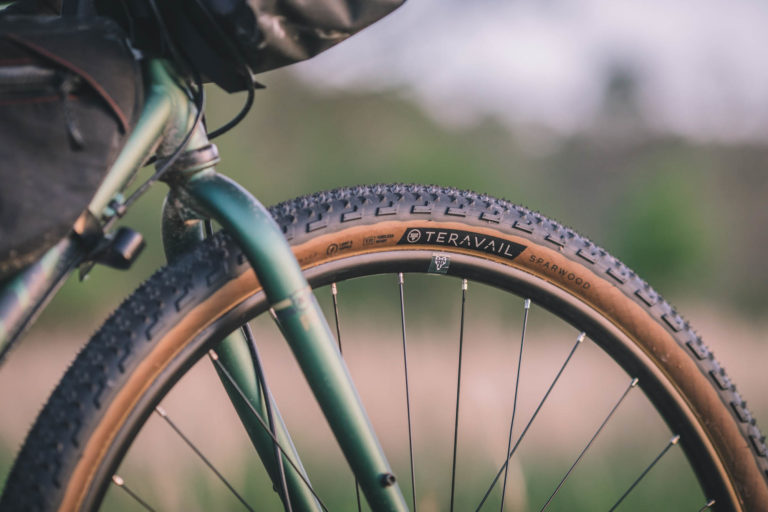
However, come the colder months many riders will opt for winter road bike tyres to counter the associated bad weather and gritty harsh roads, to save them from being victims of the dreaded flint or glass puncture. If you're new to cycling, or even a recent returner, it's always good to know how to fix a puncture and mend an inner tube.
Larger tyres allow for lower pressures that help absorb the bumps, increasing grip and comfort too. Watch out for mudguard clearance though as larger tyres could be limited if you have minimal clearance.
If you're after something for more off road adventures, then it's worth investing in the best gravel bike tyres.
If you commute in town, you’re likely to need a more heavy-duty option. Broken glass and general debris mean the probability of slitting your tyres is way higher. Speed isn’t everything for commuting, so you’ll want to look out for a hard-wearing tyre that will give you some longevity for the money.
What are we really paying for? In basic terms we pay for technology in the rubber, quality of the construction and weight.
Cheaper options tend to lack in grip and puncture protection and are usually supplied with a heavier, steel bead. Rigid steel beaded tyres, other than being harder to transfer around off the bike, are heavier than folding alternatives.
Though cheaper, they can also be a pain to put on and pull off the wheel, mostly at the expense of your thumbs.
Although you may feel that a cheaper option is ok for you, some tyre manufacturers ensure their compounds work well in a good range of temperatures, meaning either grip, protection or longevity works better all year round. It may be a big outlay but might pay to save money in the long run.
Keeping an eye on your tread is important too. Not only for the life of the tyre, but watching out for stuck glass or flints that haven’t penetrated just yet.
Ideally, cleaning your bike regularly and giving your tyres a quick once over before each outing could save you a puncture during your ride, unless you pick something up en-route of course.
If your time is limited, then it's worth knowing how to clean your road bike in seven minutes.
As you’ll know, it doesn’t matter how well you prepare, you’ll inevitably get a puncture... there, we’ve said the P word!
There are seven essentials you need to take on every ride. In your pocket or seatpack you should carry at least a set of tyre levers, puncture repair kit, two tubes, a mini-pump and a business card just in case you have a complete blow out. It does happen.
Round up of today's best deals
Pirelli PZero Velo Road Tyre
£44.44
View
See all prices
Low Stock
Vittoria Corsa G2. 0 TLR Road Tyre
0 TLR Road Tyre
£57.99
View
See all prices
Pirelli P Zero Race tyre
£57.99
View
See all prices
Schwalbe Pro One tubeless tyres
£64.99
View
See all prices
Reduced Price
Continental Grand Prix 5000
£119.99
£72.99
View
See all prices
Reduced Price
Specialized Turbo Cotton Road Tyre
£65
£56.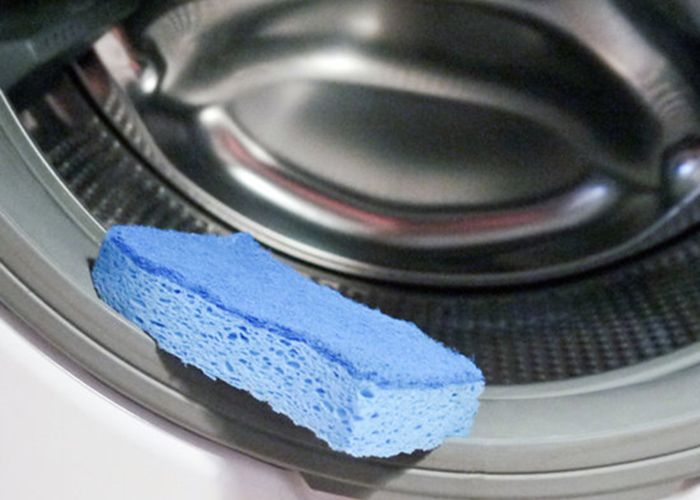 99
99
View
See all prices
Reduced Price
Maxxis High Road tyres
£69.99
£51.99
View
See all prices
Reduced Price
Goodyear Eagle F1 road bike tyres
£53.99
£49
View
See all prices
Reduced Price
Specialized Roubaix Pro tyre
£35
£27.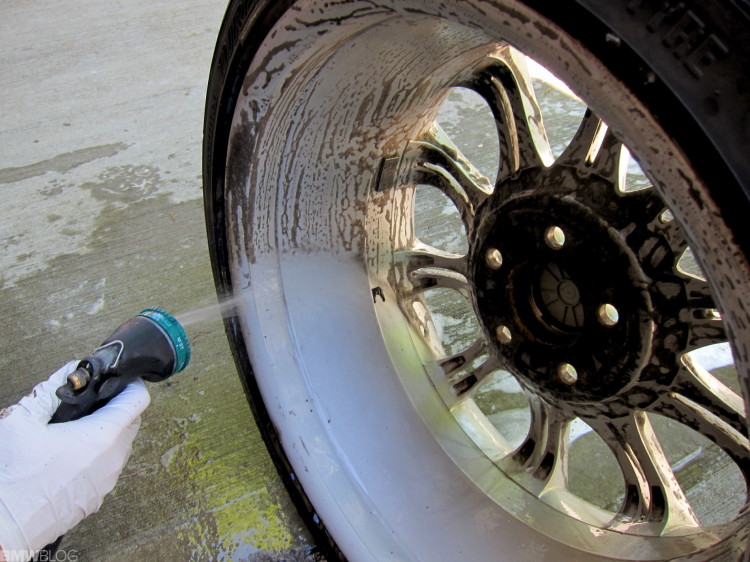 99
99
View
See all prices
powered by
Simon Smythe is Cycling Weekly's senior tech writer and has been in various roles at CW since 2003. His first job was as a sub editor following an MA in online journalism. In his cycling career Simon has mostly focused on time trialling with a national medal, a few open wins and his club's 30-mile record in his palmares. These days he spends most of his time testing road bikes, or on a tandem doing the school run with his younger son.
Click To Enlarge
Click To Enlarge
Click To Enlarge
Click To Enlarge
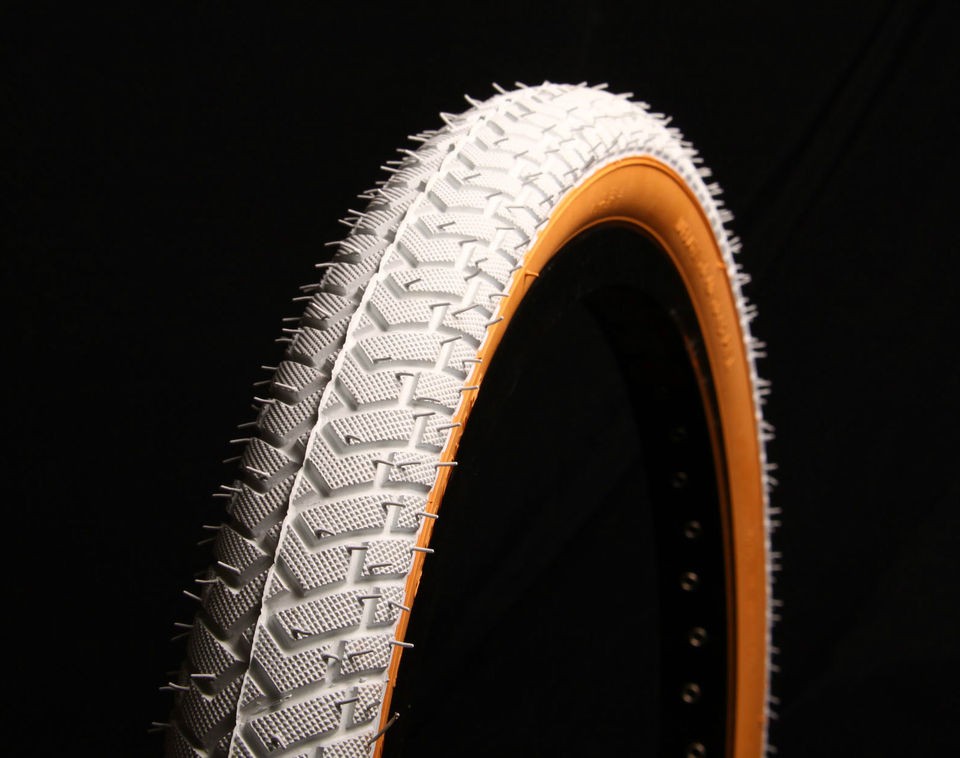 00
00
 00 USD
00 USD
Ships for 1lb or less via USPS First Class Mail
Brand/Model: Specialized Turbo Cotton 26mm
Single or Pair: Single
Width: 26 mm
Tubeless: No
Condition: This tire shows typical wear from prior use. No flattening of the tread in the center of the tire. Lots of life left!
Also, please reference the listing photos to evaluate the current wear and condition of the item.
At CyclingUpgrades, we fulfill all orders next business day or sooner. Generally we are able to fulfill orders placed by 12pm MT on the same day, however it is not guaranteed. We ship all items via USPS except for frames/wheels which ship via UPS or Fedex. Please check our other listings for additional cycling upgrades and thank you for shopping our store!
Generally we are able to fulfill orders placed by 12pm MT on the same day, however it is not guaranteed. We ship all items via USPS except for frames/wheels which ship via UPS or Fedex. Please check our other listings for additional cycling upgrades and thank you for shopping our store!
New! Silca Mattone Seat Pack Accessory Cycling bag
Regular price $5000 $50.00
New! Silca Sicuro Titanium Water Bottle Cage Black Cerakote 30g
Regular price $8500 $85.00
New! Silca Titanium Chisela Road Bike Computer Mount
Regular price $12500 $125.00
Mint! Enve SES 4.5 Carbon Clincher Wheelset 700c Rim Brake Chris King R45
Regular price $1,99500 $1,995.00
New! Silca Ultimate Tubeless Sealant Replenisher 4 oz bottle
Regular price
$1200
$12. 00
00
(
Updated:
27/07/2020
)
Contents of article
The right technology and the right detergents will help get rid of brake dust and gravel stuck in the tread, improving the safety of the car, driver and passengers.
How to wash tires we will tell in this article.
To clean the wheels from dirt, dust and oil residues, you will have to act according to the following plan:

In the final, the wheel is applied with a protector that protects the tires from the harmful effects of ultraviolet radiation.
To clean dried-on dirt from rims and wheels, you will need a machine that generates high-pressure water. Such installations are produced by American and European companies, so they are quite expensive, but they can be replaced with an ordinary hose and a special nozzle that accelerates the water jet to a pressure sufficient to clean the car.
Such installations are produced by American and European companies, so they are quite expensive, but they can be replaced with an ordinary hose and a special nozzle that accelerates the water jet to a pressure sufficient to clean the car.
To remove residual dirt, you will need a medium-hard bristle brush and a cleaning solution that is used to treat wheels and rims. This solution can be prepared from household chemicals found in the kitchen or bathroom, or bought at an automotive store. Moreover, store products are divided into universal foam cleaners and solutions based on weak acids, which can only process car rims. By the way, if you don’t know how to wipe rubber off a car, try this solution.
To wash the wheels of cleaning products, you need the same high-pressure apparatus or a hose with a nozzle. But as a napkin that will wipe off the remaining water, you need to use only clean microfiber from the package.
Summer Drive Protection Sound Comfort
Rating:
4.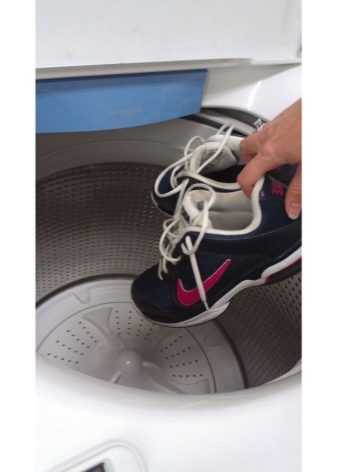 5
5
Tires Goodyear Eagle F1 Asymmetric 3 SUV
Summer Drive protection
Rating:
4.5
Tires Goodyear Eagle Sport TZ
Summer Drive protection
Rating:
4.5
Tires Goodyear EfficientGrip 2 SUV
Summer Drive Protection Run On Flat
Rating:
4.5
Tires Goodyear EfficientGrip Performance
Winter Drive protection
Tires Goodyear UltraGrip Arctic 2 SUV
Winter Drive Protection Sound Comfort
Rating:
4.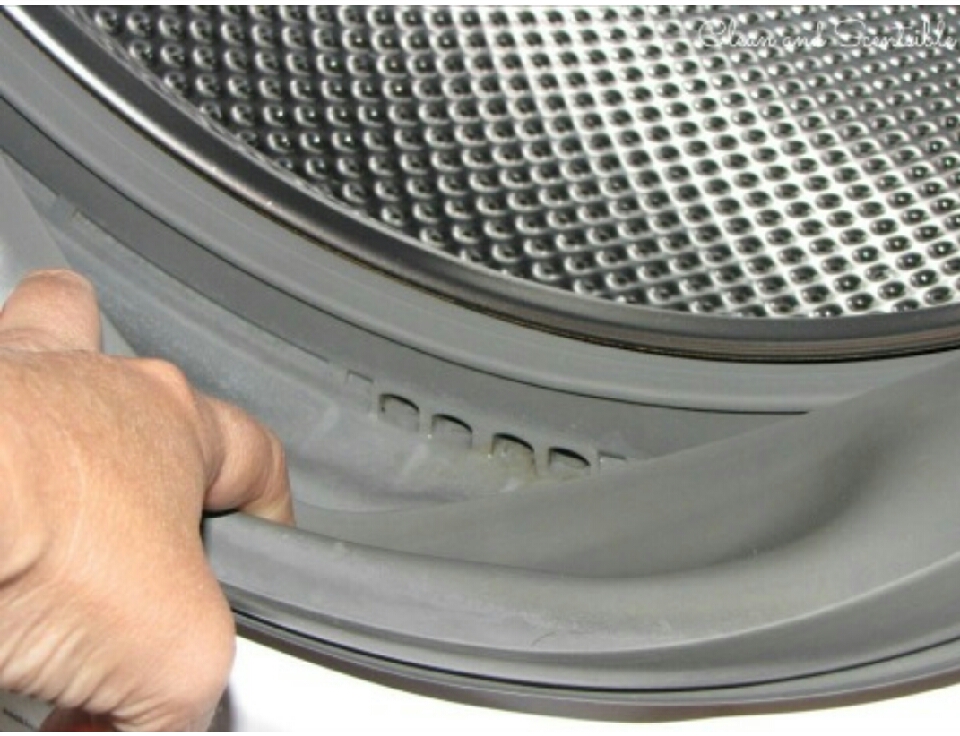 5
5
Tires Goodyear UltraGrip Ice 2
Winter Drive Protection Sound Comfort
Rating:
4.5
Tires Goodyear UltraGrip Ice SUV
Winter Drive protection
Tires Goodyear UltraGrip Performance+ SUV
All season Drive protection
Rating:
5
Tires Goodyear Vector 4Seasons Gen-3 SUV
Summer Drive Protection Run On Flat
Rating:
4
Tires Goodyear Wrangler HP All Weather
All season Drive protection
Rating:
4.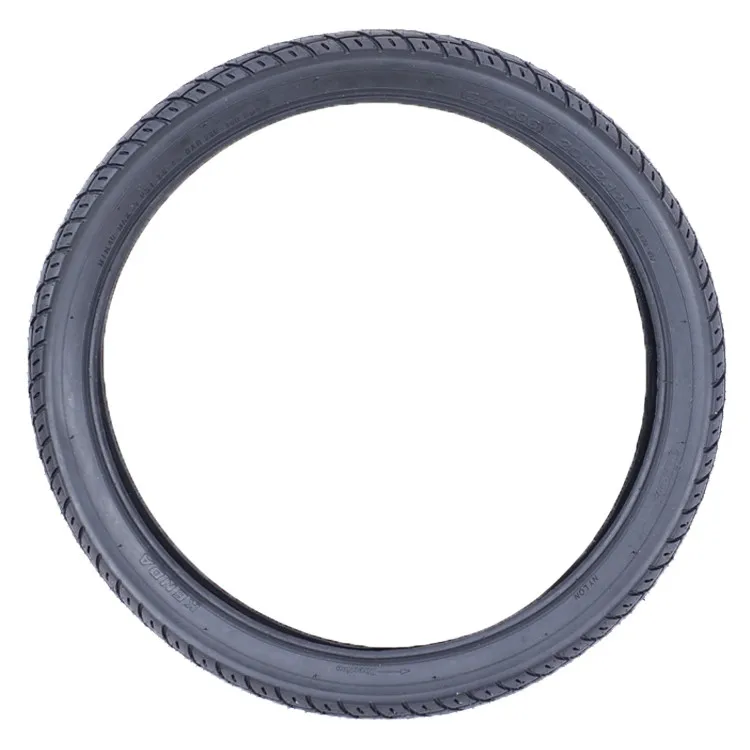 5
5
Tires Goodyear Vector 4Seasons
Summer
Rating:
4.5
Tires Goodyear Wrangler All-Terrain Adventure with Kevlar
Summer Drive protection
Rating:
4.5
Tires Goodyear EfficientGrip SUV
Summer Drive Protection Run On Flat
Rating:
4
Tires Goodyear Eagle F1 Asymmetric SUV
To prepare a solution that can clean dirt from tires, dilute in a small amount of water to half a standard bottle of dishwashing detergent.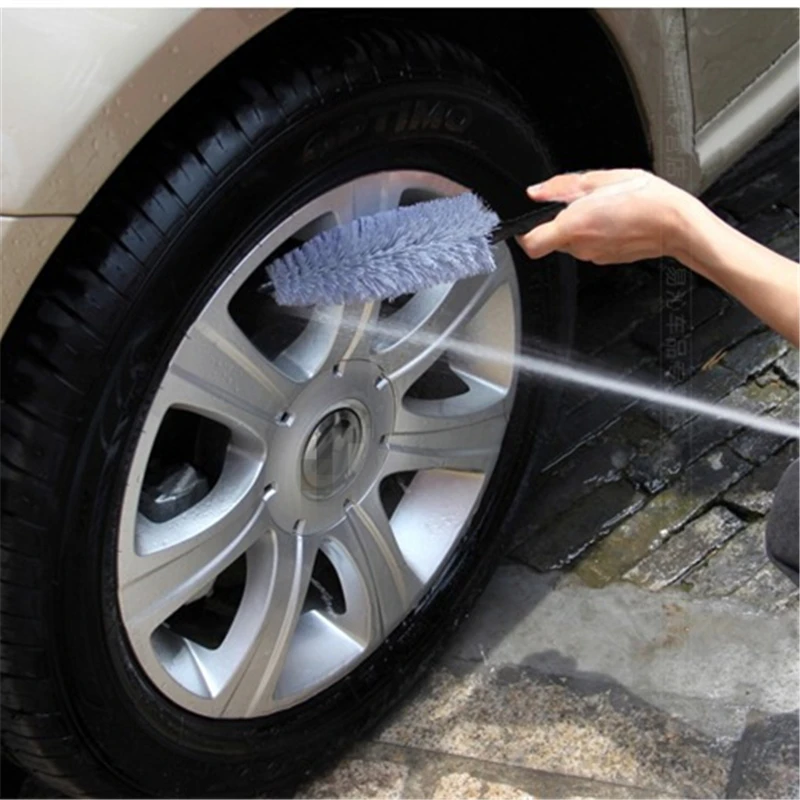 Pour the resulting concentrate into a container into which it is convenient to dip a car brush. Thanks to the abundance of surfactants found in dish detergent, a homemade solution will clean tires as well as a factory cleaner.
Pour the resulting concentrate into a container into which it is convenient to dip a car brush. Thanks to the abundance of surfactants found in dish detergent, a homemade solution will clean tires as well as a factory cleaner.
Rules for the use of home remedies that can clean wheels are similar to the recommendations of manufacturers of commercial drugs. Before treating tires and rims with home remedies, make sure you wash the tires. Otherwise, brake dust and gravel residues will turn into abrasive particles that can scratch the tread when you scrub it off dirt with a brush or sponge. Do not try to clean the wheel with an old cloth that has been used to clean the engine compartment or bodywork - it will stain the wheel with oil or gasoline.
Find Goodyear tires for your vehicle
Vladimir Gavrilov
Estimated reading time: 4 minutes
3931
Category: Service Auto
Tire service employees trying to quickly serve a queue of many customers during seasonal wheel changes. They install winter tires and return summer tires to the owner with layers of dirt accumulated over many months of operation. How dangerous is this dirt and what is the best way to deal with it?
They install winter tires and return summer tires to the owner with layers of dirt accumulated over many months of operation. How dangerous is this dirt and what is the best way to deal with it?
Road dirt adhering to rubber consists of a number of specific elements that are hazardous to human health. It contains wear products of the rubber compound from hundreds of thousands of cars. Fine particles cover the asphalt with a thin layer, accumulate in its pores and stick to the tires under the influence of static electricity. Rubber wear products are classified as substances of the fourth hazard class and are listed as carcinogens, which is why tires cannot be disposed of at landfills and used for other purposes near residential buildings. It is forbidden to make flowerbeds, fences and garden sculptures from them because of the risk of soil contamination.
In addition, the road mud contains dried residues of technical oil and poisonous antifreeze, chemicals from washer fluid, as well as soot from fuming trucks and other chemicals that got on the asphalt during transportation.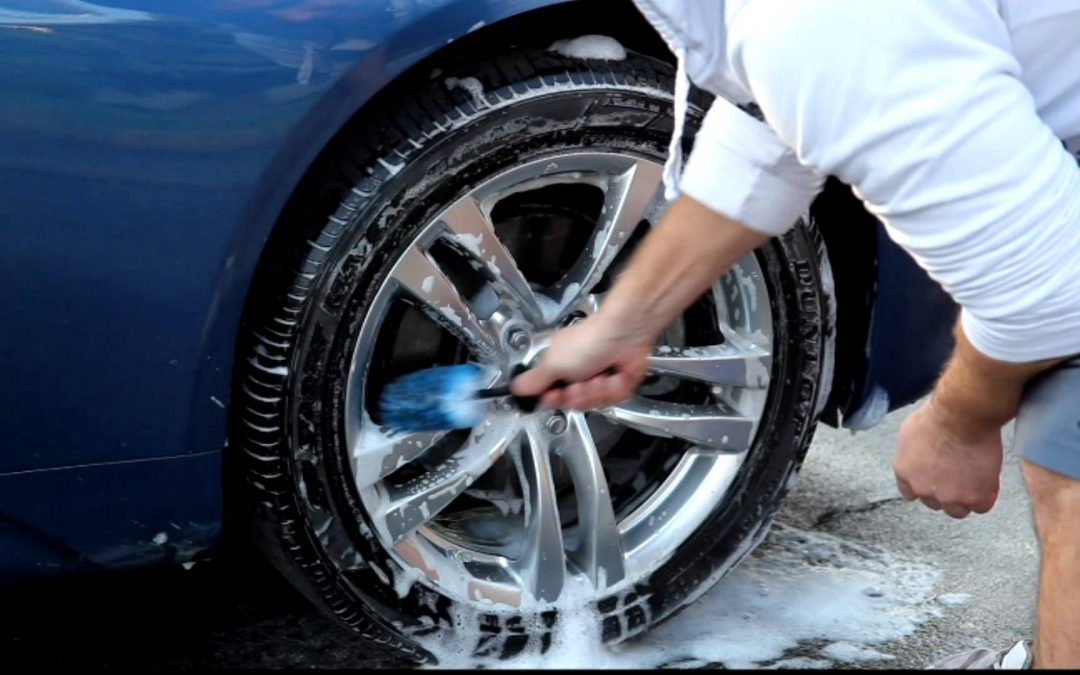 It is enough to run your palm along the tread and sidewalls of the tire, and a black sticky trace of this poisonous substance will remain on it. It is highly undesirable to carry all this into the house, store it on a balcony or in a pantry. Therefore, even if the tires have not been used on the off-road and there are no layers of wet clay on them, they must be washed thoroughly.
It is enough to run your palm along the tread and sidewalls of the tire, and a black sticky trace of this poisonous substance will remain on it. It is highly undesirable to carry all this into the house, store it on a balcony or in a pantry. Therefore, even if the tires have not been used on the off-road and there are no layers of wet clay on them, they must be washed thoroughly.
This can be done at car washes, with plain water using high-pressure cleaners. Fortunately, self-service car washes have become widespread. It only takes a few minutes to work on the tires to make the rubber clean.
When washing, it will not be superfluous to use detergents and brushes. However, it is better to refuse car foam at a car wash, because it has a caustic alkaline composition, which is also harmful to health. It is better to pick up a car shampoo for manual use. It is better to rub the rubber not with a sponge, but with a brush with a long bristle.
If the tires are removed from the vehicle and stored together with the rims, then the rims are also washed.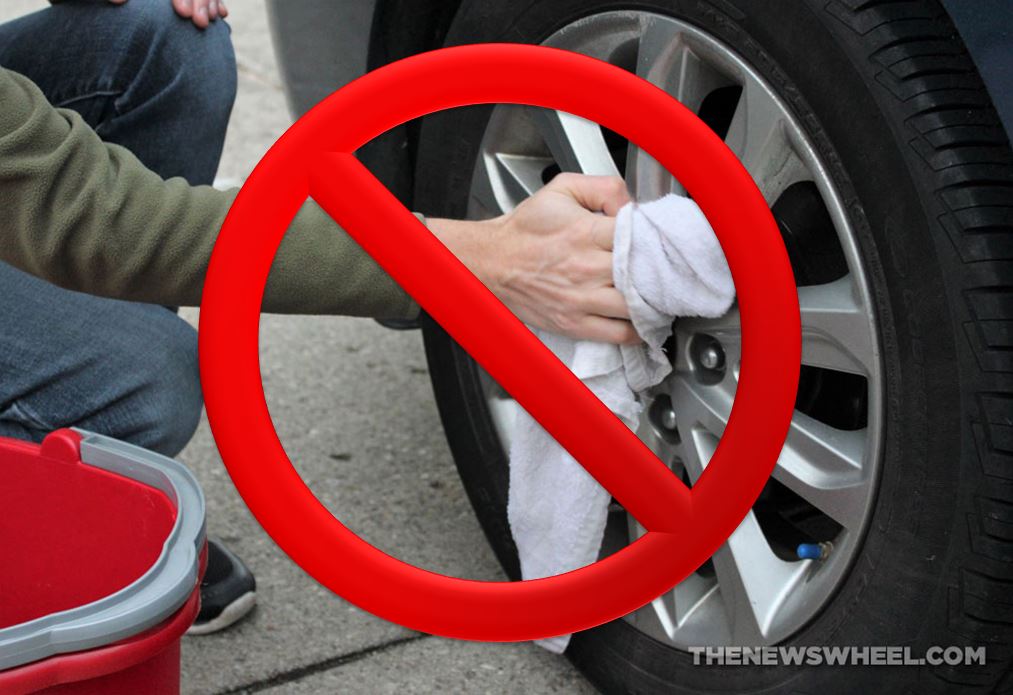
Car tires cleaned with a cleaning agent should be wiped dry with a microfiber cloth. At the same time, a cast disc should not be treated with the same rag as rubber, because it has already absorbed fine-grained dust, which will scratch the metal surface like an abrasive.
After washing, in no case should you coat the rubber with protective solutions, as the sidewalls and tread are already perfectly resistant to damaging environmental factors. You should not resort to chemical blackening either, because during long-term storage, chemical processes begin, and the top layer of rubber decomposes. Tire manufacturers claim that chemicals are more likely to harm tires than to save them.
Tires are best stored in plastic bags, each tire separately. Dry the tires after washing. If this is not done, then the remaining water collects inside the tire and, when placed in a bag, can create a humid atmosphere inside, which leads to undesirable consequences.